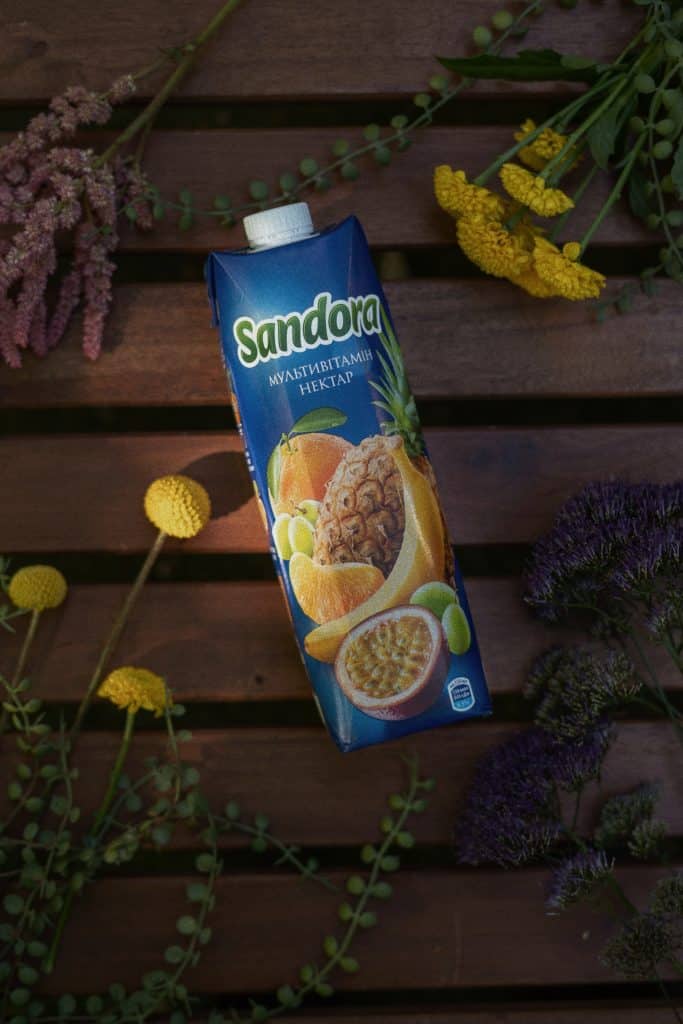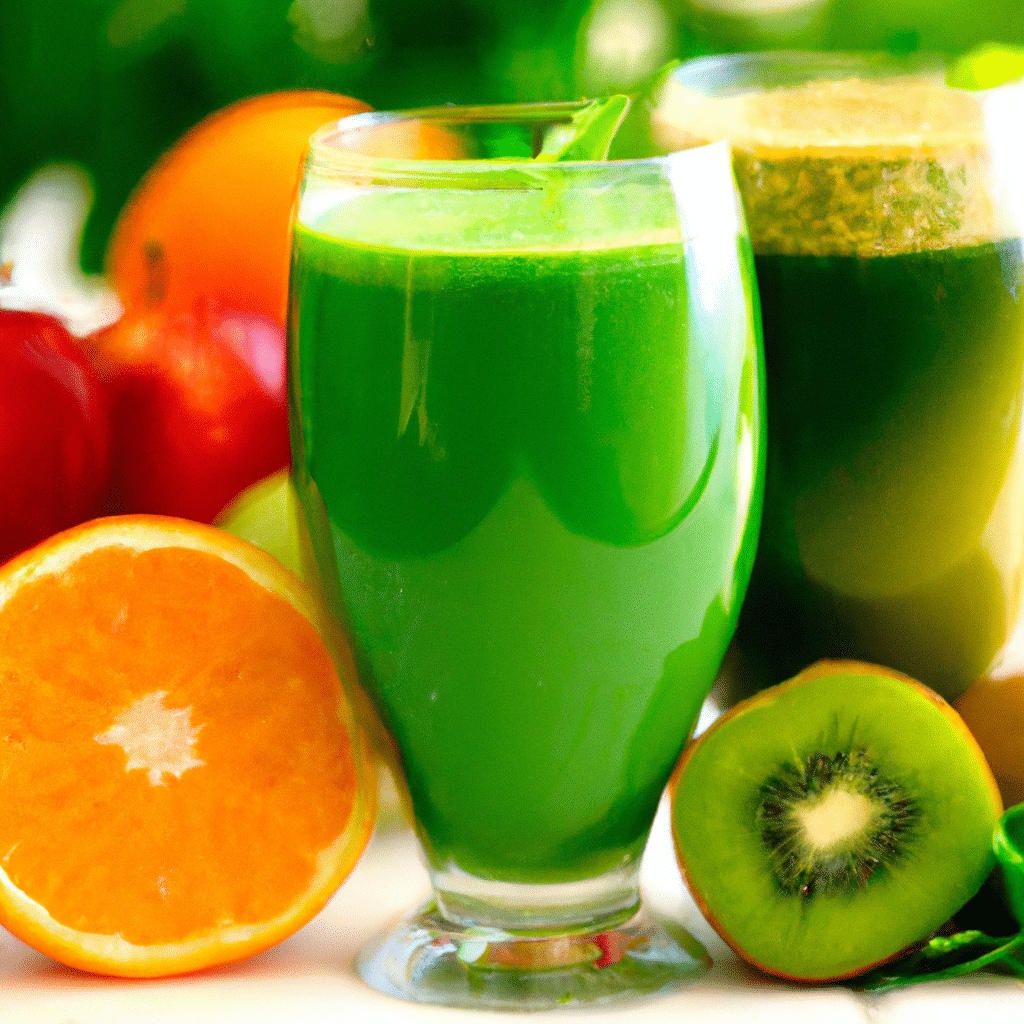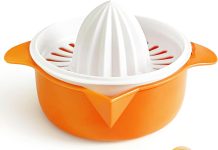If you’re new to the world of juicing and eager to kickstart a healthier lifestyle, we’ve got just the answers you’re seeking. From vibrant green blends bursting with nutrients to refreshing citrus concoctions, our expertly curated juice recipes for beginners are sure to tantalize your taste buds and keep you feeling energized throughout the day. Get ready to embark on a flavorful journey towards wellness and discover the perfect juice recipes to suit your taste and health goals.
This image is property of images.unsplash.com.
Review contents
1. Beginner-Friendly Juice Recipes
Are you new to juicing and looking for some easy and delicious recipes to get started? Look no further! We have curated a list of beginner-friendly juice recipes that are not only simple to make but also packed with nutritional benefits. Whether you prefer a refreshing green juice or a vibrant fruit blend, we have got you covered. Let’s dive in and explore the world of juicing!
1.1 Simple Green Juice
Green juices are a fantastic way to incorporate leafy greens into your diet. They are rich in vitamins, minerals, and antioxidants that support overall health. Our simple green juice recipe consists of just a few basic ingredients: kale, spinach, cucumber, and lemon. Start by washing the greens thoroughly and cutting them into smaller pieces. Then, feed them into your juicer along with a sliced cucumber and the juice of half a lemon. The result is a vibrant, refreshing green juice that will leave you feeling energized and nourished.
1.2 Basic Orange Juice
If you’re a fan of citrus fruits, this basic orange juice recipe is perfect for you. Oranges are packed with vitamin C and other essential nutrients that support immune function and promote healthy skin. To make this juice, all you need are a few fresh oranges. Peel them and remove any seeds before feeding them into your juicer. Within minutes, you’ll have a delicious glass of pure orange juice that is sure to brighten your day.
1.3 Refreshing Watermelon Juice
During the hot summer months, there’s nothing more refreshing than a tall glass of watermelon juice. Watermelon is not only hydrating but also loaded with vitamins and antioxidants. To make this juice, simply scoop out the flesh of a ripe watermelon and remove any seeds. Blend the watermelon until smooth and strain the juice to remove any remaining pulp. Serve it chilled and enjoy the sweet and juicy goodness of this summertime favorite.
1.4 Apple and Carrot Combo
Apples and carrots make a delightful combination in a juice. Apples add a touch of sweetness, while carrots bring their vibrant color and earthy flavor. Together, they create a well-rounded juice that is both delicious and nutritious. Start by washing and cutting the apples and carrots into smaller pieces. Feed them into your juicer and watch as the vibrant orange liquid fills your glass. Sip on this juice to boost your energy and support your immune system.
1.5 Berry Blast Juice
Berries are a powerhouse of antioxidants and are known for their numerous health benefits. This berry blast juice combines the goodness of strawberries, blueberries, and raspberries, resulting in a colorful and flavorful drink. Start by washing the berries thoroughly and removing any stems or leaves. Add them to your juicer, and within moments, you’ll have a vibrant, nutrient-packed juice that is as delicious as it is beautiful.
2. Nutritional Benefits of Juicing
2.1 Introduction to Juicing
Juicing is a process where the juice is extracted from fruits and vegetables, leaving the pulp behind. This concentrated juice is rich in vitamins, minerals, and antioxidants, making it a convenient way to increase your intake of essential nutrients. By consuming fresh juice, you can easily incorporate a variety of fruits and vegetables into your diet, even those you may not typically enjoy eating whole.
2.2 Increased Fruit and Vegetable Intake
One of the biggest benefits of juicing is that it allows you to consume a larger quantity of fruits and vegetables in a single serving. Many people struggle to meet the recommended daily intake of fruits and vegetables, but juicing provides an easy and delicious way to bridge that gap. By juicing, you can easily consume multiple servings of fruits and vegetables in just one glass of juice.
2.3 Boosted Vitamin and Mineral Consumption
Freshly extracted juices are packed with vitamins and minerals, which are essential for overall health and well-being. Juicing allows for the quick absorption of these nutrients, as they are not hindered by the fiber found in whole fruits and vegetables. This increased bioavailability ensures that your body can efficiently utilize these nutrients to support various bodily functions.
2.4 Detoxification and Cleansing
Juicing is often associated with detoxification and cleansing due to its ability to eliminate toxins from the body. Fruits and vegetables contain powerful antioxidants that help neutralize harmful free radicals and promote detoxification processes in the liver. Including cleansing ingredients such as lemon, ginger, and leafy greens in your juices can further enhance these detoxifying effects.
2.5 Enhanced Digestion and Gut Health
The high fiber content in fruits and vegetables plays a crucial role in improving digestion and maintaining a healthy gut. However, for individuals with sensitive digestive systems, consuming large amounts of fiber can be challenging. Juicing removes the fiber, making it easier for the body to digest and absorb the nutrients without causing digestive discomfort. This can be particularly beneficial for those with digestive issues or certain medical conditions.
3. Choosing the Right Juicer
3.1 Centrifugal Juicers
Centrifugal juicers are the most commonly available and affordable type of juicers. They work by using a rapidly spinning blade to extract juice from fruits and vegetables. These juicers are quick and efficient but tend to produce a slightly frothy juice due to the high speed of operation. They are best suited for juicing firm fruits and vegetables and are a popular choice for beginners.
3.2 Masticating Juicers
Masticating juicers, also known as slow juicers or cold-press juicers, operate at a slower speed, which helps preserve more nutrients and enzymes in the juice. These juicers use a chewing or grinding mechanism to extract juice, resulting in a higher yield and a less oxidized final product. Masticating juicers handle leafy greens and softer fruits with ease and are a preferred choice for those seeking maximum nutrition from their juices.
3.3 Twin Gear (Triturating) Juicers
Twin gear juicers are the most advanced and expensive type of juicers. They utilize two interlocking gears to extract juice, resulting in highly efficient and nutrient-rich juices. These juicers are particularly effective in extracting juice from harder produce, such as carrots and beets. While twin gear juicers offer exceptional juice quality, they can be more challenging to clean and operate.
3.4 Citrus Juicers
As the name suggests, citrus juicers are designed specifically for extracting juice from citrus fruits like oranges, lemons, and grapefruits. They are usually manual or electric press-style juicers that efficiently extract the juice, leaving behind the seeds and pulp. Citrus juicers are a great addition to any kitchen, especially if citrus fruits are a regular part of your juicing routine.
3.5 Choosing the Best Option for Beginners
For beginners, a centrifugal juicer is often an excellent choice due to its affordability, ease of use, and versatility. These juicers are readily available and can handle a wide range of fruits and vegetables, making them ideal for experimenting with different recipes. As you become more immersed in the world of juicing and develop a deeper understanding of your preferences, you can explore other types of juicers that may better suit your needs.
4. Preparing the Fruits and Vegetables
4.1 Selecting Fresh and Ripe Produce
When it comes to juicing, using fresh and ripe produce is key to achieving the best flavor and nutritional value. Look for fruits and vegetables that are firm, vibrant in color, and free from blemishes or bruises. Depending on the recipe, choose organic options whenever possible to minimize exposure to pesticides and other harmful chemicals.
4.2 Cleaning and Washing
Before juicing, it is crucial to clean and wash your produce thoroughly. Even if you plan to peel certain fruits or vegetables, it is still important to rinse them to remove any dirt, bacteria, or contaminants that may be present on the surface. A produce brush can be handy for scrubbing firmer produce like carrots or cucumbers.
4.3 Removing Peel, Rind, or Seeds
While some fruits and vegetables can be juiced with their peels, others may need to be peeled before juicing. For example, citrus fruits and pineapples should be peeled, while apples and cucumbers can typically be juiced with their peel intact. Additionally, it is important to remove any seeds from fruits like apples or berries to avoid bitterness in the juice.
4.4 Cutting Into Suitable Pieces
To ensure efficient juicing, it is advisable to cut larger fruits and vegetables into smaller pieces that will fit comfortably through the feed chute of your juicer. For leafy greens, tear or chop them into smaller sections to prevent them from clogging the juicer.
4.5 Storing Prepared Ingredients
If you’re not immediately juicing the ingredients after preparing them, it’s essential to store them properly to maintain their freshness and nutrition. Fruits and vegetables can be stored in airtight containers or resealable bags in the refrigerator for up to a few days. However, it is generally best to juice fresh produce as soon as possible to maximize their nutritional benefits.
This image is property of images.unsplash.com.
5. Beginner Juice Recipe Tips
5.1 Start with Simple Combinations
As a beginner, it’s a good idea to start with simple juice combinations consisting of just a few ingredients. This allows you to get a feel for the flavors and understand how different fruits and vegetables work together in a juice. Simple combinations like apple and carrot or spinach and cucumber are great starting points before gradually experimenting with more complex flavor profiles.
5.2 Experiment with Fruit-to-Vegetable Ratios
Finding the right balance between fruits and vegetables in your juice is a matter of personal preference. Some individuals prefer sweeter juices with a higher fruit content, while others enjoy the earthy flavors of vegetable-centric juices. Experiment with different ratios until you find the perfect balance that suits your taste buds.
5.3 Gradually Increase Vegetable Content
While fruits are delicious and naturally sweet, it’s important to remember that they also contain natural sugars. As you progress in your juicing journey, consider gradually increasing the vegetable content in your juices to reduce overall sugar intake. Leafy greens like kale or spinach are excellent choices to incorporate more vegetables into your juice without compromising the taste.
5.4 Add Herbs and Spices for Flavor
Herbs and spices can take your juice recipes to the next level by adding complexity and depth of flavor. Fresh herbs like mint, basil, or cilantro can bring a refreshing twist to your juices, while spices such as ginger, turmeric, or cinnamon can add warmth and a hint of spice. Be adventurous and experiment with different combinations to discover your favorite flavor profiles.
5.5 Consider the Seasonal Availability
Take advantage of the seasonal availability of fruits and vegetables when planning your juice recipes. Not only will you ensure the freshest produce, but you will also be supporting local farmers and enjoying the natural flavors that each season brings. Seasonal variations can add excitement and diversity to your juicing experience.
6. A Few More Beginner-Friendly Juice Recipes
6.1 Tropical Carrot and Pineapple Juice
If you’re looking for a taste of the tropics, this juice recipe is for you. Combine freshly juiced carrots with ripe pineapple chunks for a sweet and tangy blend that will transport you to a sunny beach. Not only does this juice taste incredible, but it’s also packed with vitamins and minerals that support eye health and boost immunity.
6.2 Cucumber and Ginger Detox Juice
Cleanse and refresh your body with this invigorating detox juice. Start with cooling cucumbers and add a generous knob of fresh ginger for an extra kick. Ginger is known for its powerful detoxifying properties and supports digestion, making it an excellent addition to any cleansing juice. Sip on this rejuvenating blend to awaken your senses and promote overall well-being.
6.3 Spinach, Apple, and Lemon Cleansing Juice
This cleansing juice is a perfect choice for those new to juicing. Combine nutrient-rich spinach with crisp apples and a squeeze of lemon for a vibrant and refreshing blend. Spinach is packed with vitamins A, C, and K, while apples add a hint of sweetness. The lemon not only adds a burst of flavor but also enhances the body’s natural detoxification processes.
6.4 Beetroot and Berry Boost Juice
If you’re looking to boost your energy levels and enhance athletic performance, this juice recipe is a winner. Beetroots are known for their ability to increase blood flow and improve stamina, making them a popular choice among athletes. Combine the natural sweetness of beetroots with antioxidant-rich berries, such as blueberries or strawberries, for a delicious and vibrant juice that supports your active lifestyle.
6.5 Tomato, Basil, and Celery Refresher
This savory juice is perfect for those who prefer a non-sweet option. Juicy tomatoes, aromatic basil, and crisp celery create a refreshing blend that is both hydrating and flavorful. Add a splash of lemon juice for a zesty twist. This juice is a great way to consume more vegetables and enjoy the natural goodness of fresh ingredients.
This image is property of images.unsplash.com.
7. Understanding Potential Risks and Precautions
7.1 Sugar Content and Portion Control
While fresh juices offer a plethora of health benefits, it’s important to be mindful of their sugar content, especially if you have diabetes, are watching your calorie intake, or have specific dietary restrictions. Fruits naturally contain sugars, and when juiced, their concentrated form can elevate blood sugar levels. Practice portion control and monitor your overall sugar intake to maintain a balanced diet.
7.2 Allergies and Sensitivities
If you have known allergies or sensitivities to certain fruits or vegetables, it is crucial to avoid those ingredients in your juice recipes. Common allergens include citrus fruits, strawberries, and certain tree nuts. Always read labels and check with your healthcare provider to ensure you are not consuming anything that may trigger an allergic reaction.
7.3 Oxalate Concerns
Some vegetables, such as spinach, kale, and beet greens, contain high levels of oxalates, which may contribute to the formation of kidney stones in susceptible individuals. If you have a history of kidney stones or are at risk, it is best to speak with your healthcare provider about the suitability of consuming these vegetables in juiced form. They may recommend alternative ingredients that are lower in oxalates.
7.4 Interactions with Medications
Certain fruits, vegetables, and herbs can interact with medications, potentially affecting their efficacy or causing unwanted side effects. If you are taking any medications, it is important to consult with your healthcare provider before making significant changes to your diet, including incorporating large amounts of particular fruits or vegetables into your juice recipes.
7.5 Consulting a Healthcare Professional
While juicing can be a healthy addition to your diet, it is always wise to consult a healthcare professional, such as a registered dietitian or nutritionist, before making significant changes to your eating habits. They can provide personalized advice based on your individual health concerns, dietary restrictions, and goals.
8. Frequently Asked Questions (FAQs)
8.1 Can I Use Bottled Juice for Recipes?
While fresh juice is always preferable, you can use bottled juice in recipes as a substitute. However, it is important to select juices without added sugars or preservatives for the best health benefits. Keep in mind that bottled juices may have less nutritional value compared to freshly squeezed juices due to processing and pasteurization.
8.2 How Many Calories Are in Homemade Juice?
The number of calories in homemade juice can vary depending on the ingredients used. Fruits such as apples, mangoes, or grapes tend to be higher in calories compared to vegetables. To estimate the calorie content of your juice, you can use online resources or smartphone apps that provide nutritional information for various fruits and vegetables.
8.3 Is Fiber Lost in the Juicing Process?
Yes, the juicing process removes most of the fiber present in fruits and vegetables. While fiber offers numerous health benefits, such as aiding digestion and promoting feelings of fullness, juicing allows for the easy absorption of vitamins and minerals without the need for excessive chewing or digestion. To maintain fiber intake, consider incorporating whole fruits and vegetables, as well as high-fiber foods, into your overall diet.
8.4 Can Juicing Replace Whole Fruits and Vegetables?
While juicing can be a convenient way to increase your intake of fruits and vegetables, it should not replace consuming whole fruits and vegetables entirely. Whole fruits and vegetables provide essential fiber and other beneficial compounds that are not present in juice. Aim for a balance between juicing and including whole fruits and vegetables in your diet to obtain the maximum benefits.
8.5 Are There Any Specific Juicing Recommendations for Children?
Juicing can be a fun and nutritious way to introduce children to a variety of fruits and vegetables. However, it is important to dilute the juice with water and offer it in moderation to avoid excessive sugar intake. Additionally, consult with your pediatrician before introducing juicing to your child’s diet, especially if they have specific health conditions or dietary restrictions.
9. Overcoming Common Juicing Challenges
9.1 Dealing with Pulp Waste
After juicing, you are left with pulp, which is the fibrous residue of fruits and vegetables. Instead of discarding the pulp, consider repurposing it in other recipes. For example, you can add it to baking recipes, soups, or stews to add extra flavor, texture, and nutrients. Additionally, you can compost the pulp to minimize waste and contribute to a more sustainable lifestyle.
9.2 Cleaning the Juicer
Cleaning the juicer can seem like a daunting task, but with a few simple steps, it can become a seamless part of your juicing routine. Always refer to the manufacturer’s instructions for specific cleaning guidelines. Start by disassembling the juicer and rinsing each part under warm water to remove any residual juice or pulp. Use a mild detergent or natural cleaning solution to scrub away any stubborn residue, and dry thoroughly before reassembling.
9.3 Incorporating Greens into Juices
Leafy greens, such as kale or spinach, can be intimidating to juice due to their fiber-rich structure. To juice leafy greens effectively, roll them into tight bundles before feeding them into the juicer. You can also sandwich them between harder fruits or vegetables to enhance juicing efficiency. Experiment with different techniques until you find the method that works best for your juicer.
9.4 Preventing Oxidation of Juices
Oxidation refers to the process by which the nutrients in juice are exposed to air and begin to degrade, resulting in a loss of flavor and nutritional value. To minimize oxidation, consume freshly juiced juice immediately or store it in an airtight container filled to the brim to reduce contact with air. Adding a small amount of lemon juice to your juice can also help slow down the oxidation process.
9.5 Juicing on a Budget
Juicing can be budget-friendly if you plan your recipes wisely and take advantage of seasonal produce. Buy fruits and vegetables in bulk when they are on sale, and consider purchasing imperfect or “ugly” produce, which is often sold at a lower price. Frozen fruits and vegetables can also be an economical option, as they are generally less expensive and retain their nutritional value.
10. Tips for Incorporating Juicing into a Healthy Lifestyle
10.1 Balancing Juices with Whole Foods
While juicing can be a nutritious addition to your diet, it is important to ensure that you are still consuming a balanced diet that includes whole foods. Juices should not replace meals or be the sole source of nutrition. Instead, incorporate juices as a complement to a well-rounded diet that includes a variety of whole grains, lean proteins, and healthy fats.
10.2 Listening to Your Body’s Needs
Everyone’s nutritional needs are unique, and it’s essential to listen to your body’s signals and adjust your juicing routine accordingly. Pay attention to how your body responds to different ingredients and ratios. Some individuals may experience digestive discomfort with certain fruits or vegetables, while others may notice increased energy levels or improved skin health. Adapt your recipes to suit your body’s specific requirements and preferences.
10.3 Considering Personal Goals and Objectives
When incorporating juicing into your healthy lifestyle, it’s helpful to identify your personal goals and objectives. Whether you’re looking to boost energy, support weight management, or improve overall well-being, tailor your juice recipes to align with these goals. Consulting with a healthcare professional or registered dietitian can provide additional guidance tailored to your specific objectives.
10.4 Exploring Juice Fasting or Cleanses
Juice fasting or cleanses involve consuming only juices for a specific period, ranging from a few days to several weeks. While these practices can offer benefits such as detoxification and weight loss, they should be undertaken with caution. It is advisable to seek guidance from a healthcare professional or registered dietitian before embarking on a juice fast or cleanse to ensure it is safe for your individual needs.
10.5 Making Juicing a Sustainable Habit
To make juicing a sustainable habit in your healthy lifestyle, establish a routine that works for you. Plan your juice recipes in advance, prep your ingredients ahead of time, and set aside dedicated juicing time to make it a seamless part of your daily routine. Investing in a quality juicer and educating yourself about various fruits and vegetables will help keep your juicing practice enjoyable and sustainable in the long run.
Juicing can be an exciting and rewarding journey, providing a delicious and convenient way to boost your intake of fruits and vegetables. With these beginner-friendly recipes, tips, and recommendations, you’ll be well equipped to embark on your juicing adventure. So grab your juicer, gather your favorite ingredients, and start enjoying the wonderful world of juicing! Cheers to your health and well-being!






































